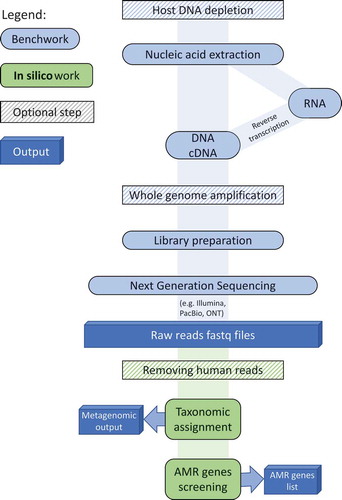Figures & data
Table 1. Summary of the main CMg pipelines for the detection of BSIs
Table 2. Summary of the main CMg pipelines for the diagnosis of LRTIs

